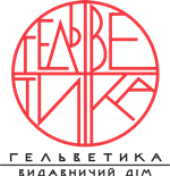CREATIVSTY DETERMINANTS IN INFOGRAPHIC DESIGN
DOI:
https://doi.org/10.32782/uad.2024.1.9Keywords:
creativity, graphic design, infographics, infographic designAbstract
The purpose of this article is to scientifically justify the elucidation of exclusive determinants of creativity in infographic projects aimed at enhancing the professional potential of graphic designers. Creativity, as a fluid indicator of the subject of the creative process, is considered a multifunctional phenomenon that plays a key role in the innovation and objective utility of design outcomes, oriented towards a specific circle of consumers. The significance of increasing the level of creativity in infographic objects is justified by their synthetic active role as a tool for visual encoding of complex informational and semantic systems. Overall, the phenomenon of creativity in the field of visual communication is still insufficiently explored from a scientific perspective, and interest in considering creativity in the aspect of infographic design has only emerged in the last few years. It has been identified that the conditions for increasing the influence and, consequently, the creativity of infographic messages involve integrating their content differentiation with visual-imagery innovations, such as figurative language. The disclosure of creativity potential in infographic design has its own specificity, justified by the artistic-like properties of infographics. It has been revealed that the determinants of creativity in infographic design include the following parameters: information visualization, simplification and clarity, storytelling, iconography and symbolism, visual logic, information hierarchy, feedback, call to action and participation, visual metaphors. A well-founded assumption is made that deeper exploration of the principles and mechanisms of developing creativity stimulation tools for designers specializing in infographics is likely to allow these professionals to increase their own professional capabilities in operating and encoding significant information.
References
Bohm D. On creativity (Vol. 13). New York: Routledge, 2004. 192 p.
Oliver M. Upstream: selected essays. London: Penguin, 2019. 194 p.
Reid A., Petocz P. Learning domains and the process of creativity. The Australian Educational Researcher. 2004. Vol. 31(2). P. 45–62.
Runco M. A., Jaeger G. J. The standard definition of creativity. Creativity research journal. 2012. Vol. 24(1). P. 92–96.
Kampylis P. G., Valtanen J. Redefining creativity–analyzing definitions, collocations, and consequences. The Journal of Creative Behavior. 2010. Vol. 44(3). P. 191–214.
Csikszentmihalyi M. Flow and the psychology of discovery and invention. HarperPerennial, New York. 1997. Vol. 39. P. 1–16.
Amabile T. M. The social psychology of creativity: A componential conceptualization. Journal of personality and social psychology. 1983. Vol. 45(2). P. 357.
Torrance E. P. Torrance tests of creative thinking–norms technical manual research edition–verbal tests, forms A and B–figural tests, forms A and B. Princeton: Personnel Pres. Inc., 1966. 96 p.
Sternberg R. J., Lubart T. I. The concept of creativity: Prospects and paradigms. Handbook of creativity. 1999. Vol. 1. P. 3–5.
Guilford J. P. Creativity: Yesterday, today and tomorrow. The Journal of Creative Behavior. 1967. Vol. 1(1). P. 1–14.
Martindale C. Cognition and consciousness. Homewood, IL: Dorsey. Press, 1981. 462 p.
West M. A., Farr, J. L. Innovation and creativity at work: Psychological and organizational strategies. New Jersey: John Wiley & Sons, 1990. 364 p.
Sternberg R. J. The Essential Sternberg: Essays on intelligence, psychology and education. New York: Springer Publishing Co Inc, 2009. 500 p.
Lubart T. I. Product-centered self-evaluation and the creative process: дис. … док. філософ. / New Haven, 1994. 164 с.
Sternberg R. J. Implicit theories of intelligence, creativity, and wisdom. Journal of personality and social psychology. 1985. Vol. 49(3). P. 607.
Binnewies C., Wörnlein S. C. What makes a creative day? A diary study on the interplay between affect, job stressors, and job control. Journal of Organizational Behavior. 2011. Vol. 32(4). P. 589–607.
De Dreu C. K., Nijstad B. A., Bechtoldt M. N., Baas M. Group creativity and innovation: A motivated information processing perspective. Psychology of aesthetics, creativity, and the arts. 2011. Vol. 5(1). P. 81.
Nagai Y., Gero, J. Design creativity. Journal of Engineering Design. 2012. Vol. 23(4). P. 237–239.
Li Y., Wang J., Li X., Zhao W. Design creativity in product innovation. The international journal of advanced manufacturing technology. 2007. Vol. 33. P. 213–222.







